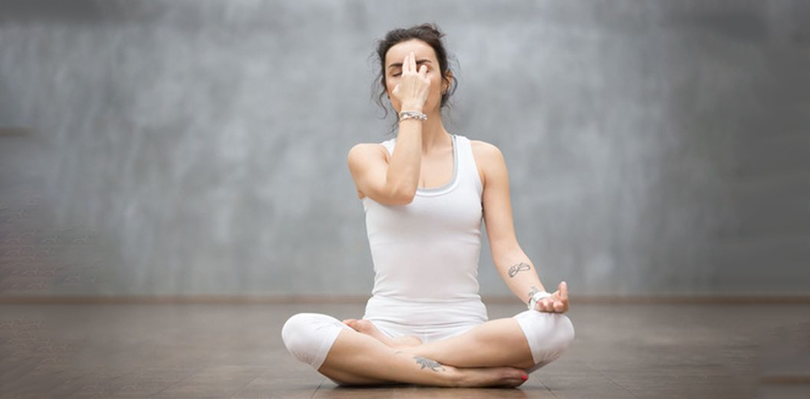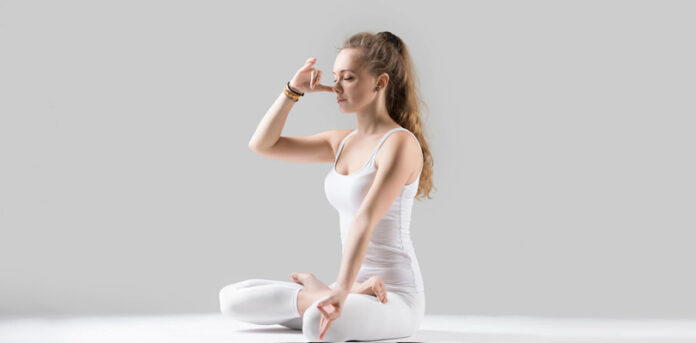Welcome to the serene world of Pranayama, where the art of controlled breathing meets the path to inner tranquility. In a fast-paced world, finding moments of calm and clarity has never been more vital. That’s where Pranayama, the ancient yogic practice of harnessing the breath, comes into play. Whether you’re a seasoned yogi seeking to deepen your practice or a newcomer curious about the transformative power of breathwork, this blog post is your comprehensive guide. We’ll explore essential techniques, share expert tips, and delve into the profound benefits of Pranayama. Get ready to unlock the secrets of mindful breathing and embark on a journey toward enhanced well-being and self-discovery.
What Is Pranayama
Pranayama is a fundamental aspect of yoga, encompassing a series of controlled breathing techniques that go beyond mere respiration. Derived from the Sanskrit words “prana” (life force) and “ayama” (extension or control), Pranayama is the practice of harnessing and manipulating the breath to enhance physical, mental, and spiritual well-being.
This ancient yogic discipline seeks to harmonize the body and mind by regulating the flow of prana throughout the body. By consciously altering the rhythm, depth, and duration of breath, practitioners can influence their vital energy, reduce stress, increase mindfulness, and promote overall health. It serves as a bridge connecting the external world with our inner selves, offering profound benefits for holistic wellness and self-realization.
Ways To Do Pranayama

Here are some different Pranayama techniques with a bit of detail on each:
Nadi Shodhana (Alternate Nostril Breathing)
This technique involves using the thumb and ring finger to alternately block one nostril while inhaling and exhaling through the other. Nadi Shodhana is excellent for balancing energy, reducing stress, and enhancing mental clarity.
Ujjayi Pranayama (Victorious Breath)
In Ujjayi, one practices breathing through the nose while slightly constricting the throat, creating a soft, ocean-like sound. This technique is known for its calming effect, helping to soothe the mind, improve concentration, and deepen meditation.
Kapalabhati (Skull Shining Breath)
Kapalabhati is a forceful exhalation followed by passive inhalation. It’s an invigorating practice that helps clear the respiratory system, increase lung capacity, and cleanse the mind of clutter.
Bhramari Pranayama (Bee Breath)
This involves inhaling deeply through the nose and exhaling while making a humming sound like a bee. Bhramari Pranayama is excellent for reducing anxiety, promoting tranquility, and easing stress.
Sheetali Pranayama (Cooling Breath)
Sheetali involves curling the tongue and inhaling slowly through it, creating a cooling effect within the body. It’s especially beneficial for reducing body heat, calming the mind, and aiding digestion.
Bhastrika Pranayama (Bellows Breath)
Bhastrika is a rapid and forceful inhale and exhale through both nostrils. It’s a powerful technique for increasing vitality, oxygenating the body, and building inner heat.
Surya Bhedana And Chandra Bhedana
Surya Bhedana involves inhaling through the right nostril and exhaling through the left, activating the body’s heating energy. Chandra Bhedana reverses the process, promoting a cooling and calming effect by inhaling through the left nostril and exhaling through the right. These practices are often used to balance the body’s energies.
Each of these Pranayama techniques offers unique benefits, and the choice of which to practice may depend on your goals, physical condition, and the current state of your mind and body. Incorporating these techniques into your daily routine can lead to enhanced well-being and inner harmony.
Benefits Of Pranayama
Here are some benefits of practicing Pranayama with additional details:
Stress Reduction
Pranayama techniques encourage slow, deep breathing, which activates the body’s relaxation response. This helps reduce the production of stress hormones like cortisol, leading to a calmer mind and reduced anxiety levels. The practice also enhances parasympathetic nervous system activity, promoting overall relaxation.
Improved Respiratory Health
Regular Pranayama practice enhances lung capacity, strengthens respiratory muscles, and improves the efficiency of oxygen exchange in the lungs. This can be especially beneficial for individuals with respiratory conditions such as asthma or bronchitis.
Enhanced Concentration And Mental Clarity
Pranayama increases oxygen supply to the brain, leading to improved cognitive function, increased focus, and enhanced mental clarity. This can be particularly helpful for students and professionals seeking to boost productivity.
Emotional Balance
Pranayama regulates the autonomic nervous system, helping to stabilize mood and manage emotions. It can be an effective tool for managing conditions like depression and anxiety, promoting a more positive outlook on life.
Physical Vitality
Practicing Pranayama techniques increases the flow of prana (vital life force) in the body, boosting energy levels and vitality. It can help combat feelings of fatigue and lethargy, leaving you feeling more energetic and rejuvenated.
Spiritual Growth
Pranayama is an integral part of yoga and meditation practices. It helps create a conducive internal environment for spiritual exploration and self-realization. By connecting with the breath, practitioners can delve deeper into their consciousness, leading to a heightened sense of self-awareness and a deeper spiritual connection.
Incorporating Pranayama into your daily routine can have profound and lasting effects on your physical, mental, and spiritual well-being. Whether you’re seeking stress relief, improved respiratory health, or a path to self-discovery, the practice of it offers a wealth of benefits for individuals of all ages and backgrounds.
Tips And Techniques To Do Pranayama
Here are a few tips and techniques to help you practice Pranayama effectively:
Choose A Comfortable Posture
Start by finding a comfortable seated position for Pranayama, such as Sukhasana (Easy Pose) or Padmasana (Lotus Pose). Ensure that your spine is straight and your shoulders are relaxed. Sitting on a cushion or yoga mat can provide additional comfort.
Mindful Breath Awareness
Begin by becoming aware of your natural breath. Notice the rhythm and depth of your inhalations and exhalations. This initial awareness sets the foundation for Pranayama practice.
Start With Basic Techniques
If you’re new to Pranayama, begin with simple techniques like Diaphragmatic Breathing. Place one hand on your chest and the other on your abdomen. Inhale deeply through your nose, allowing your diaphragm to expand and your abdomen to rise. Exhale slowly through your nose, feeling your abdomen fall. This helps establish a controlled and mindful breath.
Progress Gradually
As you become more comfortable with the basics, you can explore more advanced Pranayama techniques. Techniques like Nadi Shodhana (Alternate Nostril Breathing) and Ujjayi Pranayama (Victorious Breath) can be introduced progressively. Start with a few minutes and gradually extend the duration as your practice deepens.
Focus On The Breath
During Pranayama, maintain a gentle focus on your breath. Visualize the breath moving through your nostrils, throat, and into your lungs. This focused attention enhances the meditative aspect of Pranayama, calming the mind and promoting relaxation.
Regular Practice
Consistency is key. Aim to incorporate Pranayama into your daily routine, ideally in the morning or evening. Start with a manageable duration and gradually increase it over time. Regular practice yields the most benefits, allowing you to experience the transformative power of controlled breathing.
Remember that it is a personal practice, and it’s essential to listen to your body. If you experience discomfort or dizziness during Pranayama, pause and return to natural breathing. Consulting a qualified yoga instructor or practitioner can also be helpful, especially if you’re new to these techniques. With patience and dedication, Pranayama can become a valuable tool for enhancing your physical and mental well-being.
FAQs
What are the different types of Pranayama, and how do I choose the right one for me?
Pranayama encompasses a wide range of techniques, each with its own specific benefits and purposes. Some popular types include Nadi Shodhana (Alternate Nostril Breathing), Ujjayi Pranayama (Victorious Breath), Kapalabhati (Skull Shining Breath), and Bhramari Pranayama (Bee Breath), among others. The choice of techniques depends on your goals and physical condition. For example, if you’re looking to calm your mind and reduce stress, Nadi Shodhana might be ideal. If you want to increase energy and build inner heat, Kapalabhati could be suitable. It’s essential to consult a yoga instructor or practitioner to determine which practices align with your specific needs and objectives.
Can I practice Pranayama on my own, or should I seek guidance from a teacher?
While it’s possible to learn and practice some basic techniques on your own, having guidance from an experienced teacher can be immensely beneficial. A qualified instructor can provide personalized guidance, correct your posture, and ensure you’re using the correct techniques. They can also help you progress gradually and safely, tailoring the practice to your unique requirements and physical limitations. If you’re new to Pranayama or yoga in general, seeking the guidance of a knowledgeable teacher is highly recommended to establish a solid foundation and avoid potential pitfalls.
How long should I practice Pranayama each day to experience noticeable benefits?
The duration of daily Pranayama practice can vary depending on your experience level and schedule. For beginners, starting with 5-10 minutes a day is a good way to build a foundation. As you become more comfortable with the techniques and experience their benefits, you can gradually increase your practice time. Many practitioners aim for 20-30 minutes of it daily. However, it’s essential to prioritize consistency over duration. Regular, shorter sessions are often more effective than occasional, lengthy ones. Listen to your body, and if you experience any discomfort or dizziness, it’s crucial to stop and return to natural breathing. Always consult a qualified instructor if you have specific goals or concerns about your practice.

